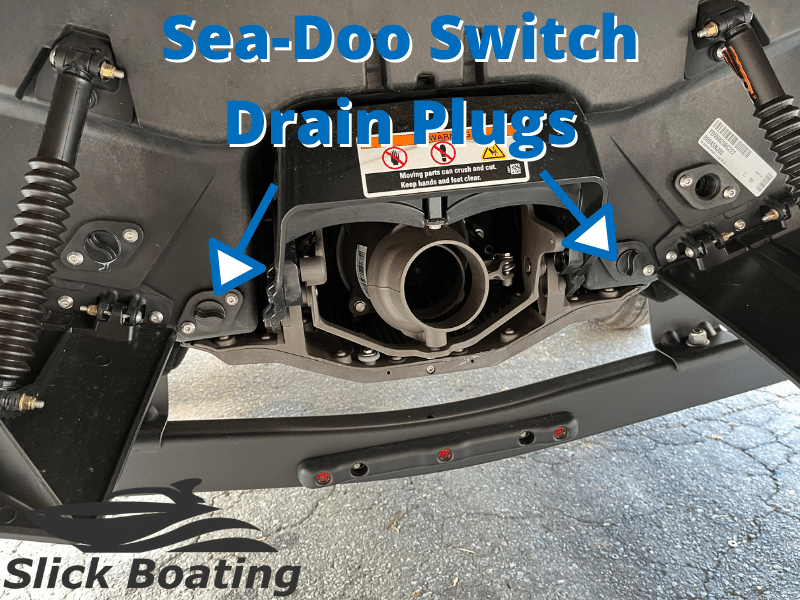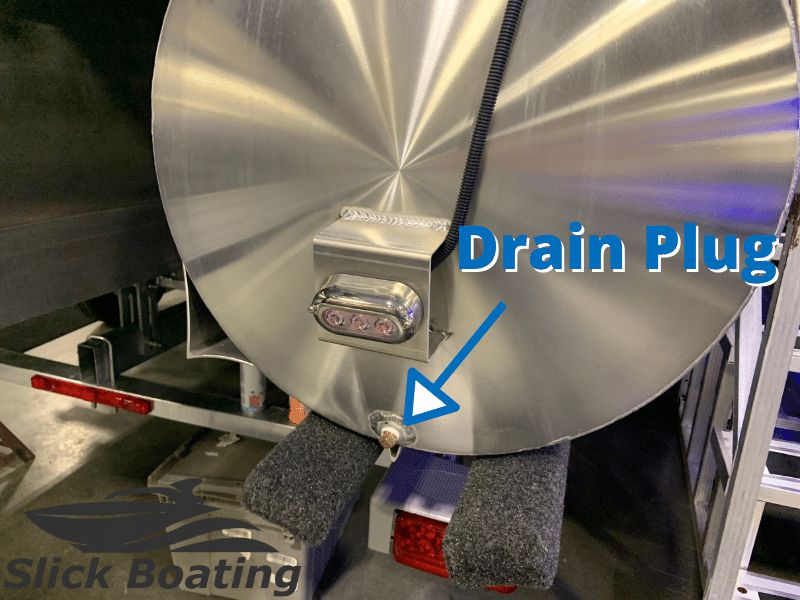Just about every boat has a drain plug, but pontoon boats can be different.
Pontoons use metal tubes, sometimes two or three of them, and this is what causes your boat to float. These tubes are often sealed, unlike a normal boat that have an open hull and water can get in.
Pontoon Drain Plugs
Some pontoon boats come with drain plugs and others don’t.
Whether a pontoon has drain plugs is up to the manufacturer of the pontoon boat. Some manufacturers deem a drain plug not needed or even a liability and won’t include them. The other manufacturers think they’re worth it, as nothing in the world is perfect.
If your pontoon boat does have a drain plug, the manufacturer thinks water may get in the toon and some years from now you’ll want to remove it.
Let’s go over why some manufacturers have a drain plug and why others don’t.
Why Some Pontoons Don’t Have Drain Plugs
Not having drain plugs on pontoon boat is still a new idea.
The toons, or tubes as some call them, are sealed up from the factory. They’re pressure tested and filled with inert gasses to test them and keep them sealed.
The only way water is getting into the toons is if you damage them by hitting something or scraping something sharp like rocks. Even then, these manufacturers have thought about this problem.
You’re seeing more and more chambered toons, which means there are smaller “rooms” inside the toons so if it’s damaged the whole toon doesn’t fill up. Other manufacturers will put foam in the toons, though not as hugely poplar as using chambers. Using foam can be a double-edge sword with boats, as talked about here.
Lastly, many manufacturers deem a drain plug as a liability. It’s a hole, and you can seal it up all you want, but it’s still a hole that can leak. The sealant can wear out, break down or the plug get damaged and fall out. No drain plug, then no plug to worry about.
Why Some Pontoons Have Drain Plugs
The biggest reason that a pontoon will have a drain plug is cost.
It’s cheaper to manufacturer a non-chambered tube with a simple drain plug.
You also save on weight, and they can get a little more buoyancy out of a toon that doesn’t have extra metal inside.
Lastly, nothing is perfect in the world, and some consider an unsinkable toon impossible. At some point water may enter the toon, either from damage, welds, manufacturer defect, or even the few miracle ones I’ve seen. I’ve even seen people do some stupid things, like the one guy install underwater lights for his pontoon, but drilled into the toon itself and breaking the seal. Things happen in this crazy world!
Getting water out of a chamber toon is hard and expensive, with many not being able to get all the water out. A simplified toon with a drain plug that is really sealed up is a balance that many manufacturers prefer to take.
Don’t Remove Pontoon Drain Plug Unless You Really Need To
If your pontoon boat did come with a drain plug, it’s mostly likely wrapped tightly with sealant tape or glue.
The drain plug on your pontoon should NOT be removed regularly like you would with a normal boat. For most pontoon boat owners, they may never need to remove the drain plug, and it’s best to keep it in place and sealed up.
If you do need to remove the drain plug, it’s because water got in the toons, and you need to fix that problem.
When the times comes to remove the drain plug, you must reapply the sealant to the threads of the drain plug and test for leaks.
Pontoon Drain Plug Location
The drain plug will be located at the rear of the toon and at the lowest portion of the toon, as shown in the intro picture of this post.
You will need an adjustable wrench to get the drain plug off, but as talked about, it’s not something you should be removing unless there is water in the toons. Then you need to reseal the drain plug when you do put it back on.
A Pontoon Will Sink Without A Drain Plug
If your pontoon boat has a drain plug, and you remove it, then yes, your pontoon boat will sink.
Some manufacturers may have foam in the toons, but they can only do so much.
And yes, a pontoon can sink if you’re being stupid.
Pontoons & Bilge Pumps
A pontoon boat most often does not have a bilge pump, especially ones for the toons, as talked about here.
There are a few cases on Tritoon’s to have bilge pumps, but the outermost toons don’t have them, as most pontoon boats toons are completely sealed up.
Top Drain Plug
It’s not uncommon for a pontoon boat to have a top drain plug, it’s hard to see and get to as the deck is often in the way.
This port is a good place to start if you think there is a crack in your tubes, as you can fill it with air to find it as shown in this video.
The Sea-Doo Switch Has A Drain Plug

The Sea-Doo Switch is a little different from other pontoon boats, as every model Sea-Doo Switch comes with a drain plug.
The Sea-Doo Switch uses a modified hull in the center as that is where the engine lives, so air needs to get to it, and it can’t be sealed off like other pontoons. When it comes to a Sea-Doo Switch it’s best to follow regular boat’s drain plug steps, take it out when storing on a trailer and NOT in water.
The drain plugs for the Sea-Doo Switch needs to be put in, or the boat will sink!
The other plugs on the Sea-Doo Switch are explained here:
Pontoons Can Leak From Welds
Welding is used to join metal pieces together.
Before a pontoon leaves the manufacturer it’s tested for leaks, but overtime, welds can break to cause water to get into the toons.
Even if the weld is not joining pieces but putting something on top, it can still crack over time and water will find its way into your toons. It can take years for this to happen, if ever, as it’s not always common.
But if there will be a hole in your pontoon, and you did not hit and damage the toons, then the welds are the next possible cause.
